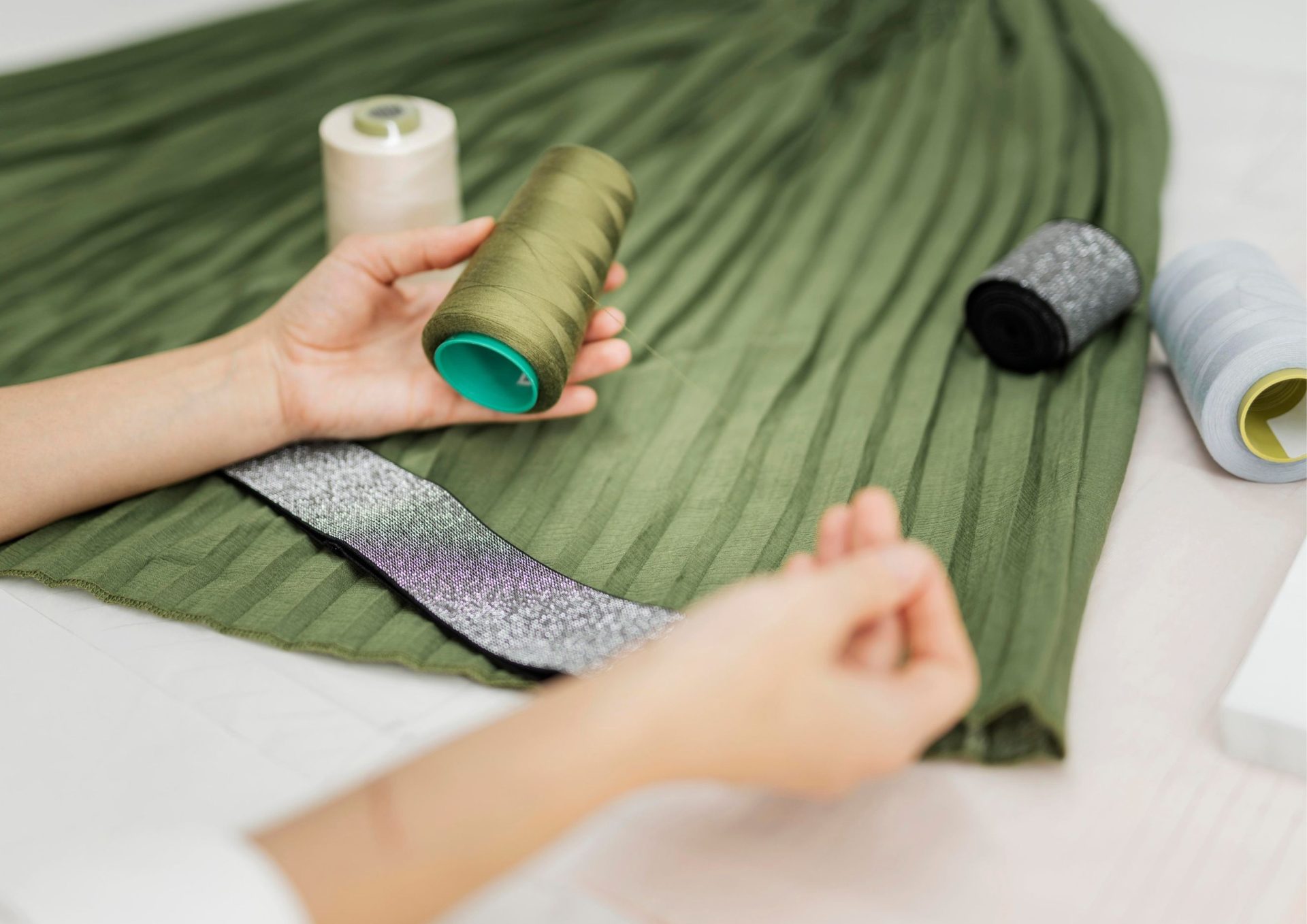Course Overview
A Line skirts are flattering for most figure types and are amongst the simplest to make. These skirts are characterised by their fitted waist and gradually flared hem, creating a silhouette that complements various body shapes. Whether you’re aiming for a casual look or a more polished style, an A Line skirt is a versatile addition to your wardrobe.
In this workshop, you will learn how to draft a basic straight skirt pattern tailored to your unique measurements. This foundational skill will provide you with the confidence to modify the design into an A Line skirt pattern, allowing for creative expression in your sewing projects.
After drafting your pattern, you will cut it out from your choice of fabric, selecting materials that suit your style and comfort. With guidance, you will construct the skirt using a variety of simple sewing techniques that are essential for any sewing enthusiast.
Throughout the process, students will gain hands-on experience in several key areas: you will learn how to lay out and cut your pattern accurately, ensuring precision in your work. Additionally, you will practice sewing a seam, which is fundamental to garment construction. Finishing the edges of your fabric will be covered to prevent fraying and enhance durability. You will also learn to sew a dart, a technique that adds shape and dimension to your skirt.
Inserting a zipper will be another important skill you will acquire, as it is a common closure method used in many garments. You will learn how to attach a facing or waistband, which not only provides a finished look but also adds comfort when wearing the skirt. Finally, you will master the technique of finishing a hem, giving your skirt a polished and professional appearance.
While basic sewing skills are an advantage, they are not a requirement for this workshop. We welcome all levels of experience, and our teacher will provide step-by-step guidance to ensure that everyone can successfully create their own beautiful A Line skirt. Join us in this fun and creative learning experience, and take your sewing skills to the next level!
Macquarie Community College operates from a range of venues across Northern and Western Sydney. We have campuses in Blacktown, Carlingford, Chatswood, Epping, Mt Druitt, Richmond, and Ryde. Enrol now!
What you will learn
Course outline
It is intended that the course will cover:
- Body measurements and how to take them
- Straight skirt draft to own measurements
- Convert straight skirt pattern to A Line skirt pattern
- Fabric layout, cutting and marking
- Assembly and fitting of skirt
- Variations to skirt basic pattern
Course outcome
By the end of this course you will be able to:
- Take their body measurements
- Draft a straight skirt to their own measurements
- Convert a straight skirt pattern to an A Line skirt pattern
- Prepare the final pattern for cutting
- Layout their fabric and cut their pattern
- Transfer pattern markings to their fabric
- Assemble and fit their skirt including sewing and finishing seams, insert a zipper, finish the waist line and sew the hem by machine or hand
- Apply colour using your favourite media.
What you need to know
Entry requirements
This course caters for all students. Basic sewing skills are an advantage.
What you need to provide
You will need to bring:
- Sewing machine (make sure it works and please bring all accessories and your instruction book)
- Pencil
- Eraser
- Sticky Tape eg magic or invisible tape
- 30cm ruler (or a longer ruler if have one)
- Optional Set Square and French Curve (if you have them)/li>
- Scissors (fabric and paper scissors)
- Large quick un-picker
- Tape Measure
- Pins
- Needles
- Marking Chalk
- Unpicker
- Fabric meterage per the pattern envelope
- 20cm fusible interfacing
- 1 reel of matching thread (Metrosene, Gutterman or Rasant good quality thread)
- 18cm skirt zipper to match fabric
Other information
- Students will work at their own pace. Those students unable to complete their project on the day will receive instructions on how to complete their garment at home.
- Suggested Fabrics
- Choose a stable woven fabric such as poplin, broadcloth, cotton blends, denim or linen. You may like to choose a cheaper fabric to use especially if you are fairly new to sewing or to trial your pattern. No knit, stretchy, shiny, slinky, stripey or check fabrics please!
Materials Provided
- Course notes

